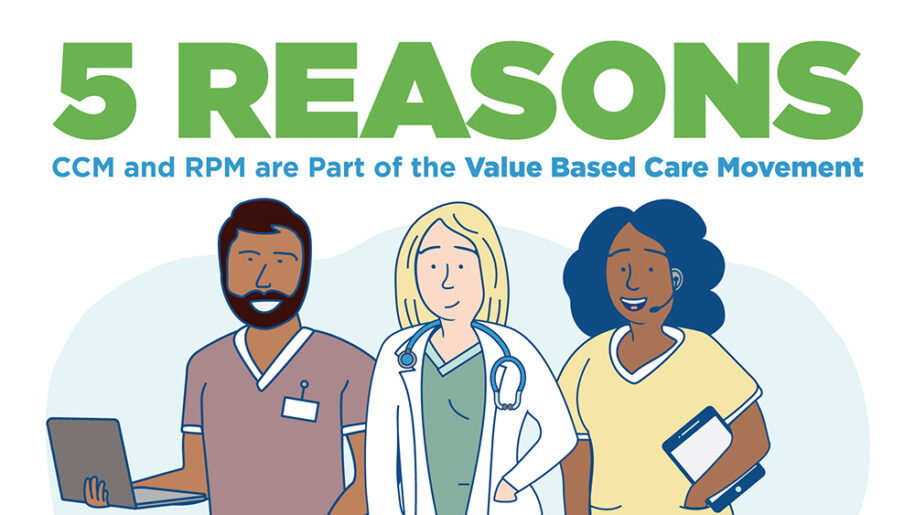
5 reasons CCM and RPM are essential to the value based care movement
Almost 12 years after the Affordable Care Act, value based care remains more of a philosophy than a framework. Providers and payers alike still struggle to put price tags on care based on value and outcomes rather than fees for service.
But the health policy aside, providers will increasingly have no choice but to lean into outcomes. Private industry, and patients themselves, will carry that torch. Clinicians and patients want health care that costs less and leads people to live better. Here are five reasons why chronic care management and remote patient monitoring play a key role in value based care.
1. CCM and RPM provide patients with clinical interventions
That means getting in front of acute situations where care costs more and outcomes are less certain.
“Success under any value-based care model requires an infrastructure for patient interventions,” Signallamp Chief Executive Officer and Co-Founder Drew Kearney said.
When chronically ill patients are part of routine monitoring programs, they engage with their remote care nurses in addition to their providers offices. The additional layer of maintenance care makes it easier to catch any red flags, and initiate the proper intervention, before they experience a crisis. When remote care nurses can catch issues sooner, they intervene and change the trajectory of care.
2. CCM and RPM rely on the same skills and assets needed for value based care
When we help you build out the infrastructure for a new Chronic Care Management or Remote Patient Monitoring implementation, we’re actually laying the groundwork for value based care. Here’s how:
| CCM and RPM Infrastructure That Promotes Value Based Care | |
| Infrastructure | Explanation |
| Disease Management | Symptoms are assessed, medication adherence is tracked and acute exacerbations are quickly addressed. |
| Clinical Time | Most chronically ill patients see multiple providers, and treatment plans change frequently. More clinical time allows nurses to address a wider variety of issues that impact patient care, not just the chief complaint. |
| Relationships | Because they have more time, remote nurses help to extend your relationship outside of doctor’s offices, leading to better engagement, honesty and accountability. |
| Technology | Deploying remote clinical teams and aligning with practice workflows requires a robust, purpose-built platform. |
3. Engagement produces outcomes
The effort to formalize value based care has actually crashed magnificently against its own purpose. Compelled to gather and report significantly more data, or else face penalties, providers spend more time facing screens than their patients.
Patient engagement hits the floor when metrics soak up so much time, regardless of how well-meaning they are. Chronic care management and remote patient monitoring both bridge the gap between box-checking and patient engagement. Because chronic patients desire more personalized support, they will engage regularly and build meaningful relationships with their remote nurses who in turn gather clinical data.

4. CCM and RPM provide a functional framework for value-based care by reducing utilization
We talked earlier about tools and infrastructure. But one other element key to the way we think about reactive care vs. proactive care is worth bearing out.
Chronic care management and remote patient monitoring reduce utilization and utterly reshape how patients and providers think about care at a fundamental level.
COVID-19 cast this phenomenon in a brilliant new light. Patients with chronic disease, who by extension are more vulnerable to the coronavirus, shied away from the clinical setting — especially emergency departments. But through CCM, they had a direct and strong connection with their doctors, were able to manage their disease and continue to receive care in a more measured setting, usually at home.
5. Empowering primary care with CCM and RPM
Primary care is the entry point into the healthcare system and most responsible for routine maintenance, preventative measures and staying out of the hospital. And while it may only be 7% of health care spend, primary care direction can lead to 90% of downstream patient spend.
If any form of value-based care is to become a reality, it needs efficient and accessible primary care. Yet the spending imbalance shows this country still hasn’t figured it out.
Signallamp and chronic care management is beginning to correct the imbalance by making primary care more accessible, patient-centered, and efficient. Practice workflow is sacrosanct and will not tolerate disruption. Providers are already overwhelmed with large numbers of sick, aging patients. Visits are too short and narrowly focused on the patient’s chief complaint.
Primary care needs more capacity to serve a higher calling of treating the whole person rather than a disease state.
Signallamp leverages CCM and RPM reimbursements to self-fund the expansion of primary care capacity with remote clinical teams. A bespoke technology platform organizes and streamlines a distributed clinical workforce aligned with practice EHR workflow, adding dozens of clinical interventions per patient, per year. Issues are identified sooner, medication compliance is monitored and instructed upon, and patients are supported individually as they access their local health and community-based services that keep them home longer and improve the quality of their lives.
Signallamp Health can help build your practice or health system to achieve better outcomes and increase value for patients.

